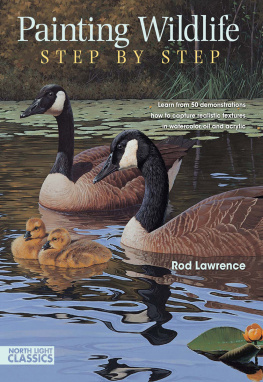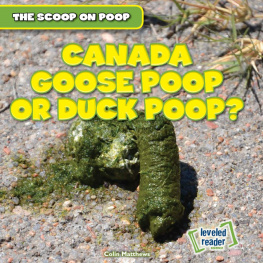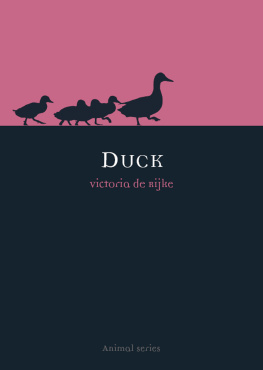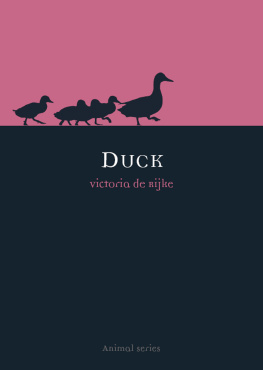Ducks, Geese, and Swans of North America
REVISED AND UPDATED EDITION
Ducks, Geese,
and Swans of
North America
REVISED AND UPDATED EDITION
Volume One
Guy Baldassarre
With Assistance from Susan Sheaffer | 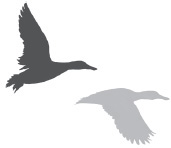
|

2014 Wildlife Management Institute
All rights reserved. Published 2014
Printed in China on acid-free paper
9 8 7 6 5 4 3 2 1
Johns Hopkins University Press
2715 North Charles Street
Baltimore, Maryland 21218-4363
www.press.jhu.edu
Library of Congress Cataloging-in-Publication Data
Baldassarre, Guy A.
Ducks, geese, and swans of North America /
Guy Baldassarre. Revised and updated edition.
pages cm
Includes bibliographical references and index.
ISBN 978-1-4214-0751-7 (hardbound : acid-free paper)
ISBN 978-1-4214-0808-8 (electronic)
ISBN 1-4214-0751-5 (hardbound : acid-free paper)
ISBN 1-4214-0808-2 (electronic)
1. AnatidaeNorth America.
2. WaterfowlNorth America.
I. Title.
QL696.A52B3348 2013
598.41dc23 2012027052
A catalog record for this book is available from the
British Library.
Maps of North America (p. 2), Alaska, Canada, the
continental United States, and Mexico (see CD-ROM)
by Robert Cronan, Lucidity Information Design
Distribution maps by Josh Stiller
Special discounts are available for bulk purchases of this
book. For more information, please contact Special Sales at
410-516-6936 or .
Johns Hopkins University Press uses environmentally
friendly book materials, including recycled text
paper that is composed of at least 30 percent post
consumer waste, whenever possible.
For Eileen, Dan, and Adam
Family is everything
Contents
Foreword
Stephen P. Havera
ILLINOIS NATURAL HISTORY SURVEY (EMERITUS)
HAVANA, ILLINOIS
As the youngest member of a remarkable research staff at the Illinois Natural History Survey in the mid-1970s, I was particularly interested in all the discussion and excitement associated with the activities of Frank Bellroses revision of Francis H. Kortrights 1942 classic volume, The Ducks, Geese, and Swans of North America. Glen Sanderson was head of the Section of Wildlife Research and he had granted Frank permission to assume the daunting task of revising and updating Kortrights benchmark, a masterwork that underwent 14 printings, indicating the importance and popularity of the book. Glen was exceptionally fond of Frank and waterfowl, especially after he first met the already formidable Bellrose in the summer of 1947 when Glen was a graduate student at the Delta Waterfowl Research Station in Manitoba and Frank was conducting some summer research. Over the ensuing years, Glen joined the Natural History Survey and eventually became the leader of the Wildlife Section, and, as such, Franks boss. Glen offered his support to Frank as well as that of our incomparable wildlife editor, Helen Schultz. Consequently, there were a lot of communications and materials exchanged between Glen, located at our main office on the University of Illinois campus, and Frank, who was housed at our biological station on the Chautauqua National Wildlife Refuge along the Illinois River, 100 miles to the west. Frank had been at this site since 1938, when he was hired by Art Hawkins, who joined the Survey only a month before.
Of course, the decade of the 1970s was well before the days of word processing, fax machines, email, and even copy machines. Franks original longhand drafts submitted to Glen and their numerous edited and typed versions are still housed in the files of the station, now known as the Frank C. Bellrose Waterfowl Research Center. The amount of effort that went into Bellroses 1976 edition of Ducks, Geese, and Swans was incredible. I was particularly interested in this undertaking since my home was in Peoria, on the Illinois River about 40 miles north of the Chautauqua Refuge headquarters in Havana, and I had been following Franks career for many years. Several of my neighbors were ardent duck hunters, and that only added fuel to my desire to work with Frank at Havana. As a result, I attended the University of Illinois for graduate school and soon became a student under the direction of Glen Sanderson. My intent to study Wood Ducks with Frank for my graduate degrees did not materialize because of the time constraints on Frank and Glen necessitated by the workload of Ducks, Geese, and Swans. Glen was also the editor of the Journal of Wildlife Management at that time. Eventually I became a Survey wildlife research scientist and, as such, witnessed first-hand the activities and responsibilities involved with the 1976 version of the book. Ducks, Geese, and Swans of North America became, once again, a huge success, to the extent that the 1976 second edition was followed by a revised version and second printing in 1978, and a third edition in 1980, which updated some species accounts. The 1980 revision also replaced the original color plates of the various waterfowl species drawn by T. M. Shortt for Kortrights original edition with those of Robert W. Hines, one of Americas best and most popular artists. Ironically, for the 1978 and 1980 versions I was then working in Havana with Frank and was fortunate to experience the other end of the working corridor for the book, at the biological station.
In the following decade, Frank focused on writing his and coauthor Dan Holms book, Ecology and Management of the Wood Duck, published in 1994, but Ducks, Geese, and Swans was never far from his heart. Although Frank semiretired in August 1982, he continued to work full time on partial salary until February 1991, when he formally retired after 53 years with the Survey. Nevertheless, he remained involved with his passionthe welfare of waterfowland with revising the 1980 edition of Ducks, Geese, and Swans until his passing in February 2005 at the age of 88, a sad day indeed for waterfowl.
Subsequently, discussions ensued about whether the revision should proceed, and, if so, by whom. Guy Baldassarre stepped forward to accept such an invitation from Richard McCabe of the Wildlife Management Institute and assumed the momentous task. The proliferation of scientific waterfowl literature since 1980 had been enormous, and the revision would be intimidating. But Guy had decades of waterfowl knowledge, a thirst for their well being, and exceptional writing and publishing experience, including two editions of the highly acclaimed Waterfowl Ecology and Management, coauthored with waterfowl expert Eric Bolen. Guy was an obviously perfect fit to accept the challenge.
I first met Guy at the Waterfowl in Winter symposium held in Galveston, Texas, back in January of 1985. He made a remarkable impression on me and his peers, as Guys presentations were not only informative, but entertaining as well. His energy and positive attitude were infectious. In one session, I was sitting with Dennis Thornburg, who was the head waterfowl biologist for the Illinois Department of Conservation and well aware of Guy and his work. Dennis chuckled and commented to me that Guy was the next speaker, adding, Hell really get things rolling! How true! After the symposium, I had the fortuitous opportunity to sit next to Guy on our flight home. During a stimulating and enjoyable conversation, we imprinted upon each other and subsequently became friends for life.
Next page

